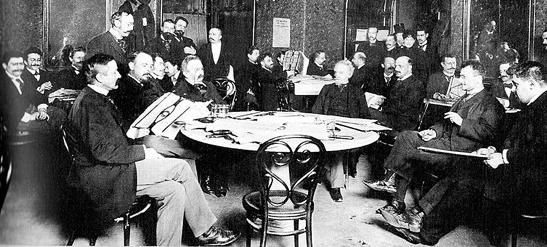A curious fact often overlooked by his biographers (but well-known among his contemporaries) was the delectation Meingast took in objects as such. This fervent appreciation of objects as such survived his shift from the naïve realism of his youth to the “infinite mirror realism” of his maturity, the doctrine of transcendental reality mirrored ad infinitum in the perception of an object and the object itself, which Meingast endorsed in the short period preceding his sudden death in 1927. Both variants of realism enabled Meingast to engage unreflectively and joyfully with objects unhindered by philosophical scruples about the deceiving nature of their appearance as objects. Meingast scholars are well aware, of course, that this youthful exultation —if we allow for the state of mind that accompanies old age to count as a second youth— was put on trial as a more mature Meingast directed his penetrating critical apparatus to the question of whether realism is truly warranted. As so often in life, the ability to reflect on the contingency of one’s existence, to uncover layers upon layers of conditionality woven into the fabric of being, an ability with which life had endowed Meingast lavishly, threatened to undermine his WELTBEZUG.
Yet his love for objects as such did not falter in the face of this. One might rather say that it evolved into a more mature kind of relation that easily alternates between objectivation (regarding the object merely as an object) and respect for it as an ambassador of a greater reality and with a specific subjectivity. Those especially close to Meingast are said to have seen the great philosopher in deep conversation with some of the favorite items in his collection, questioning them and attempting to seduce them into revealing the secrets of their true mode of existence. They describe Meingast as deeply earnest and playful at the same time when engaging in such discourse.
Meingast’s love for objects led him to build a rather impressive collection of things. Unfortunately, the erratic way Meingast went about establishing this collection, itself a direct consequence of his interest in objects simply as objects, makes it nearly impossible to establish just how far his collector’s zeal has driven him. As Lisbeth Witzelmann quoted him after accompanying the Bohemian industrialist and maker of a great number of things Vojtěch Chmel of Ronsperg at a private viewing of the collection, Meingast aspired to collect the whole world. Some biographers, most notably Erwin Bresinger in his Being Mein-Gast, have taken this anecdote as evidence of a megalomaniac streak in Meingast’s character. Clearly, Meingast’s philosophical joke was lost on him (and Lisbeth Witzelmann, for all we know).
With this prelude in place, I can now get to the point of this entry. Through the courtesy of friends with influence and connections in the trade of antiques, I have had the opportunity to scrutinize some of the objects which, so I have been credibly ensured, were indeed part of Meingast’s extensive collection.
They include:
– A spinning top in the form of a miniature carousel. Meingast is said to have been particularly fond of this object, claiming it taught him to endorse the seemingly paradoxical claim that change and stability are expressions of the same fundamental mode of existence.
– A rather ordinary looking brick. After having been asked by a connoisseur of objects what it signified, Meingast is said to have removed his glasses and, looking his interlocutor sternly in the eyes, to have exclaimed, “It’s a brick!” The precise meaning of this exclamation is a matter of intense discussion among contemporary Meingast scholars. Some claim that the statement is evidence that Meingast never completely broke with the naïve realism of his youth while others argue that it is compatible with a wide range of metaphysical positions. After having seen the brick myself, I now doubt that the conversation took the course it allegedly did.
– An ‘empty’ glass. Meingast, the querulous mind that he was, rejected its description as empty, claiming it holds great promise, is filled with potentiality. This, he continued, is the elixir of life. Only those without any connection to the fundamental mode of existence, which is to say most people, could claim that an ‘empty’ glass is empty in the ontological sense (filled with nothing).
– A stick. “Good for hitting but otherwise useless!”, Meingast was quoted by the antiquity salesman.
I was also informed that recently a great number of objects stemming from Meingast’s collection have been discovered in the attic of Victoria Brandstedt, the granddaughter of a distant cousin of Meingast. Thus far, they have not been catalogued and we can only await their presentation to the public with great eagerness.
